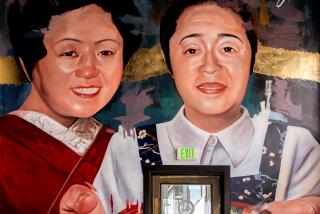CRESTED KIMONO Power and Love in the Japanese Business Family <i> by Matthews Masayuki Hamabata (Cornell University Press: $17.95; 191 pp.; </i> 0-8014-2333-3)
It’s difficult to find two cultures more dramatically different than America and Japan. While Americans in pursuit of the Dream will blithely slacken ties to extended family, the Japanese are preoccupied with winning respect within the family. While Americans celebrate promotions as symbols of money, prestige and freedom, the Japanese at least seem to accept them somberly, as burdens to be fulfilled. And while most Americans discreetly cloak their social standing in private bank accounts or isolated estates, the Japanese are constantly defining theirs in public: Few lines of Japanese can be spoken, for instance, without distinguishing between close and distant friends, responsible and immature relatives, macho and boyish men.
In an America of lonely careerists and fragmented families, do we have something to learn from the tightly knit Japanese? Or does Japanese culture confine singular people in a straitjacket? Matt Hamabata, a third-generation Japanese immigrant, essentially answers “yes” to both questions in “Crested Kimono,” a book where case studies as emotionally charged as Kabuki drama make up for the occasionally drab fieldwork notes that Hamabata the Haverford College sociology professor had to include.
Attempting to ingratiate himself in Japanese business families, Hamabata began his research by pretending to be a native Japanese; this was quickly belied, however, by tramps across “pure” white floor cushions at dinner parties and a reluctance to meet with potential marriage partners. “You are being fukoo ,” snaps one matchmaker, “undutiful to your parents.”
Gradually, Hamabata learned to manipulate his social position with remarkable precision: After being given a box of chocolates and $250 in cash, for example, he makes a long string of calculations and then buys a return gift valued at exactly $125; his friendship is thereby continued, but circumscribed.
Hamabata’s central point, nevertheless, is that most intimate social relationships in Japan cannot be manipulated with such facility; the Japanese are constantly compromising their own desires to avoid tensions that might tear at the social fabric. He interviews four young Japanese women, for example, whose duty to family confines them in marriages to insensitive, uncaring men.
Hamabata tries to justify the system, dismissing Mitsuko’s passionate love for George, for instance, by pointing out that she later fell out of love. Only family bonds are lasting, he argues, while “the inner, private life of emotions, although real, is ephemeral.” It’s an argument that astutely exposes problems with American marriages, where a union with another person is often seen as the only way we can become part of something larger than ourself. But it fails to acknowledge that Japanese culture might also have its shortcomings, such as an impersonal dating ritual that permitted Mitsuko to love George only from afar.
More to Read
Sign up for our Book Club newsletter
Get the latest news, events and more from the Los Angeles Times Book Club, and help us get L.A. reading and talking.
You may occasionally receive promotional content from the Los Angeles Times.







